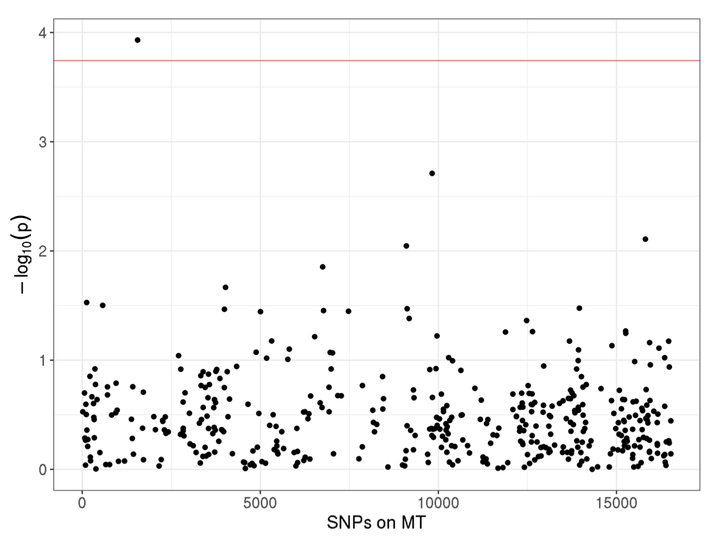
Background: Childhood glioblastoma multiforme (GBM) is a highly aggressive disease with low survival, and its etiology, especially concerning germline genetic risk, is poorly understood. Mitochondria play a key role in putative tumorigenic processes relating to cellular oxidative metabolism, and mitochondrial DNA variants were not previously assessed for association with pediatric brain tumor risk.
Methods: We conducted an analysis of 675 mitochondrial DNA variants in 90 childhood GBM cases and 2,789 controls to identify enrichment of mitochondrial variant associated with GBM risk. We also performed this analysis for other glioma subtypes including pilocytic astrocytoma. Nuclear-encoded mitochondrial gene variants were also analyzed.
Results: We identified m1555 A>G was significantly associated with GBM risk (adjusted OR 29.30, 95% CI 5.25-163.4, P value 9.5X10 -4). No association was detected for other subtypes. Haplotype analysis further supported the independent risk contributed by m1555 G>A, instead of a haplogroup joint effect. Nuclear-encoded mitochondrial gene variants identified significant associations in European (rs62036057 in WWOX, adjusted OR = 2.99, 95% CI 1.88-4.75, P value = 3.42X10 -6) and Hispanic (rs111709726 in EFHD1, adjusted OR = 3.57, 95% CI 1.99-6.40, P value = 1.41X10 -6) populations in ethnicity-stratified analyses.
Conclusion: We report for the first time a potential role played by a functional mitochondrial ribosomal RNA variant in childhood GBM risk, and a potential role for both mitochondrial and nuclear-mitochondrial DNA polymorphisms in GBM tumorigenesis. These data implicate cellular oxidative metabolic capacity as a contributor to the etiology of pediatric glioblastoma.